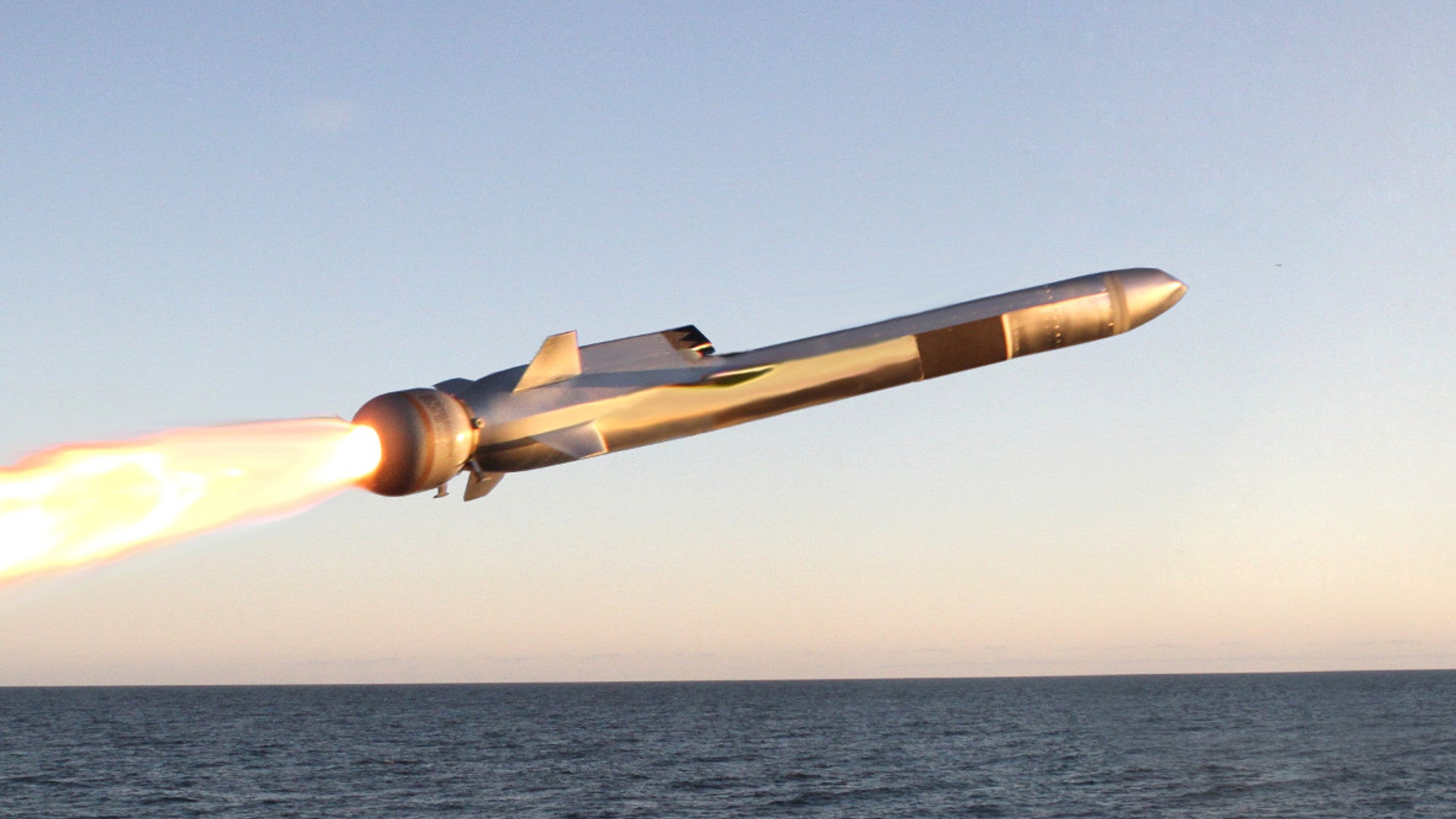The U.S. Navy has awarded its long-awaited Over-the-Horizon Weapon Systems contract to Raytheon, which had joined together with Norwegian defense contractor Kongsberg to offer the Naval Strike Missile, or NSM. The service sees the weapon as an important anti-ship and land-attack weapon capability for the Littoral Combat Ship and its future frigates, but the selection could also pave the way for adding the missiles to other types of ships and for other services to acquire air- and ground-launched versions.
The Pentagon included the fixed-price deal, valued at more than $14.8 million, in its daily contracting announcement notice for May 31, 2018. The contract has additional options and could be worth nearly $850 million in total. Under the stated terms, the Raytheon-Kongsberg team will supply the weapon systems, consisting of NSMs in canisters, deck-mounted launchers, and a fire control system. In addition, the contract includes funds for mission support and training equipment and other services.
Kongsberg’s NSM is a sub-sonic, sea-skimming cruise missile with a range of around 100 miles primarily geared toward taking out enemy ships. The weapon navigates to the general target area using a combination of GPS, inertial navigation system (INS), and terrain recognition, and can either fly over or around islands and other land masses. According to the Norweigan firm, the INS offers an effective backup in the increasingly likely event that an opponent disrupts the GPS connectivity.
In its terminal stage of flight, the missile switches to an infrared imaging seeker to home in on the target. Using a built-in database of representative ship types, the weapon can automatically discriminate between the intended target and other objects, which gives it a high degree of accuracy and makes it much less susceptible to electronic warfare tactics and countermeasures.
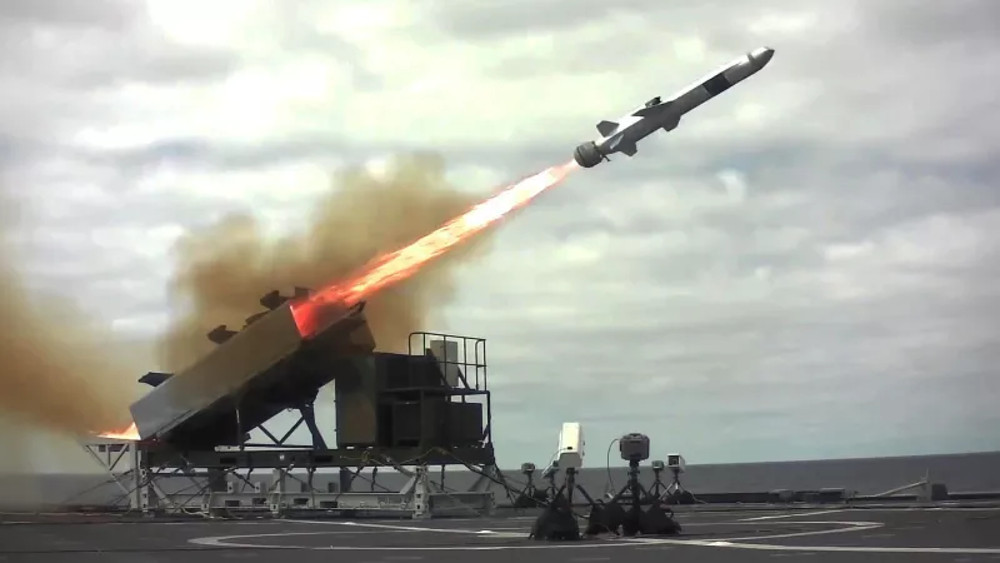
The missile’s guidance system also gives it a secondary land-attack capability. With its range, though, this is hardly a comparable capability to long-range land attack cruise missiles, such as the Tomahawk.
The NSM also makes random movements in its terminal stage of flight to help avoid enemy close-in defense systems and has low-observable or “stealthy” characteristics to make it more difficult for adversaries to spot in advance.

Raytheon and Kongsberg are also cooperating on the air-launched Joint Strike Missile, or JSM, which is an improved derivative of the NSM. This is a more robust multi-role weapon with more than double the range depending on its flight profile, a larger warhead, and various other upgraded features.
The weapon has a two-way datalink allowing the firing platform to send updated targeting information to it while it’s still in flight or send it heading in a different direction altogether. It is possible that some of these features will eventually migrate to the NSM or that a sea-launched version of the JSM will become available.
Of course, its capabilities notwithstanding, the NSM was more or less a shoe-in for the deal after competitors Boeing and Lockheed Martin, who had offered an updated version of the long-serving RGM-84 Harpoon. The very stealthy Long Range Anti-Ship Missile (LRASM), respectively, dropped out in May 2017. Boeing complained that the Navy was asking for a far less capable weapon than Harpoon and Lockheed Martin suggested that the requirements looked tailored to one specific offer – an apparent reference to the one from the Raytheon-Kongsberg team.
Harpoon has long been the Navy’s go-to anti-ship weapon and despite continued upgrades, the underlying design is becoming increasingly dated. It is possible that the NSM might eventually serve as a partial replacement with the anti-ship variant of the Tomahawk taking over the long-range anti-surface warfare role.
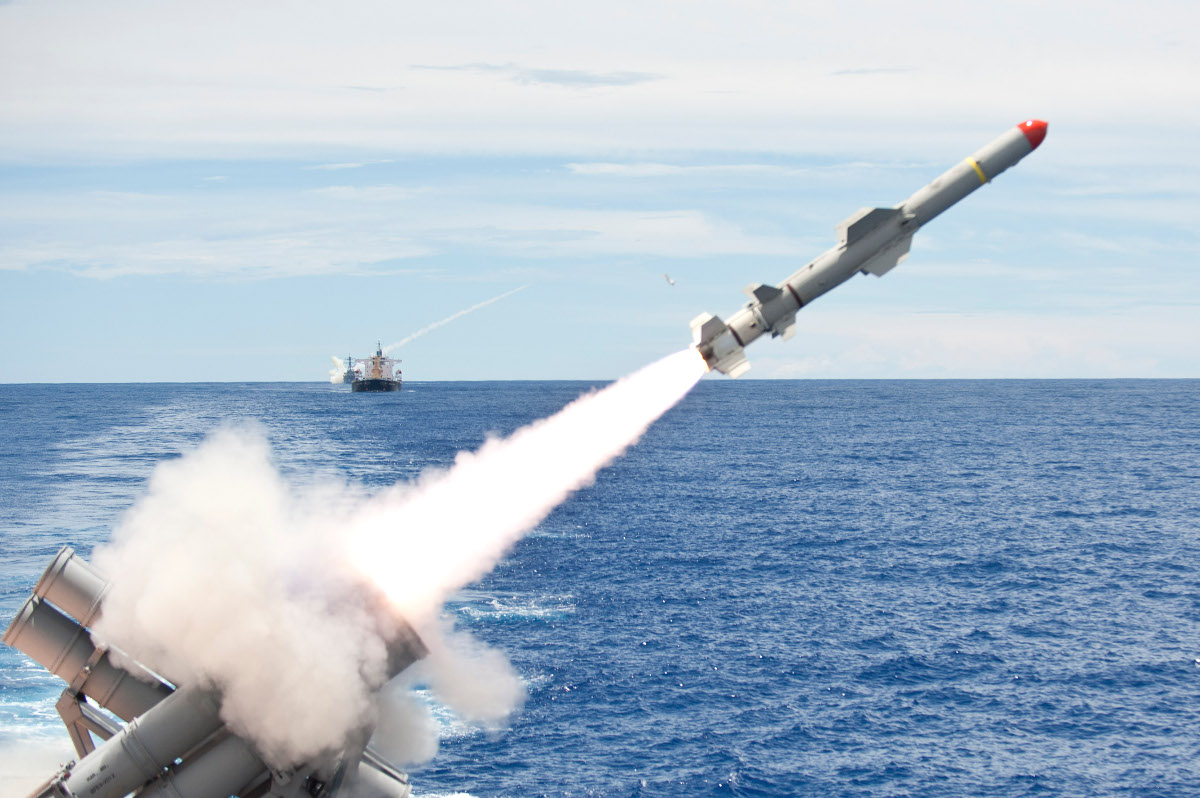
Neither company has lodged a formal complaint about the contracting process so far. The Navy is undoubtedly hoping it can still avoid any protests now that it has effectively sole-sourced the contract.
It already plans to add the Over-the-Horizon Weapon Systems to some of its two distinct classes Littoral Combat Ships, subvariants known as Small Surface Combatants, which would give these perpetually underwhelming ships a stand-off anti-ship and land attack capability they desperately need to be useful in anything but the most low-threat environments. At present, the only weapons on the bulk of these ships are a 57mm rapid-fire gun, RIM-116 Rolling Airframe Missile close-in defense system, and various smaller automatic cannons and machine guns.
In 2014, the service actually installed NSM launchers on the flight deck of the Independence-class LCS USS Coronado as part of a test. In 2016, that same ship received Harpoons on its forward deck as part of an experimental configuration to further validate the basic concept of rapidly adding over-the-horizon anti-ship missiles to the ships. The Navy is also planning to add smaller Hellfire missiles to the ships for additional close-in protection, primarily against swarms of small boats.


The Navy’s latest budget request for the 2019 fiscal year includes more than $18 million for a total of eight individual over-the-horizon missiles in their launch canisters for the LCS specifically. The accompanying budget outlay sees the service purchasing 12 more in each of the next three fiscal years and then 20 additional missiles in fiscal year 2023, for a grand total of 64 weapons by that point. Millions more would pay for the launcher and fire control components.
The NSM is also a key component of the Navy’s plans for its future guided missile frigates, or FFG(X). The service wants to pick one of five proposed ship designs by 2020 and see the first one delivered three years after that. The plan is to buy a fleet of 20 of the ships at a unit cost of nearly $1 billion.
Able to perform as an anti-ship and limited land attack cruise missile, NSM could greatly expand the capabilities of these ships since they would not have to carry two different types of weapons to perform both roles. This means that LCS and frigates armed with the missiles could rapidly shift from anti-surface warfare missions to supporting operations ashore and back again without having to rearm. The system’s relatively simple deck-mounted launchers also obviate the need to find trade space under the deck to install more complex vertical launch systems, such as the Mk 41.

But in buying the missiles for these ships, the Navy might open up a path for additional purchases within the service and elsewhere across the U.S. military. The containerized launchers would be relatively easy to add to almost any suitably sized ship, include the Navy’s new expeditionary sea bases and even logistics platforms.
The San Antonio-class landing platform dock ships would one particularly logical starting place since they have existing free space on top of the deck that ship maker Huntington Ingalls had originally been set aside as part of plans to install two Mk 41 eight-cell vertical launch systems. The Marine Corps has already expressed an interest in giving these ships, as well as the forthcoming Flight II San Antonios and other amphibious assault ships, greater offensive capabilities to support expeditionary and distributed operations.
Armed with a version of the NSM with updated networked capabilities, and coupled with the Navy’s existing plans to increase data-sharing between its ships and manned and unmanned aircraft, any ship armed with the missiles might be able to engage targets beyond the range of their own onboard sensors. As such, it might be even easier to add in this offensive capability without the need for more complex target acquisition upgrades.
The video below details the Navy’s plans for an over-arching networked force.

That networking could expand to air- and ground-launched versions of the missile, as well. As noted, the JSM derivative already has a data-link built into its design.
Its physical shape is also tailored to the internal weapons bays on the F-35A and F-35C Joint Strike Fighters and could be adapted for external carriage on that aircraft and other planes. Norway already plans to integrate JSM onto its F-35As in the future.
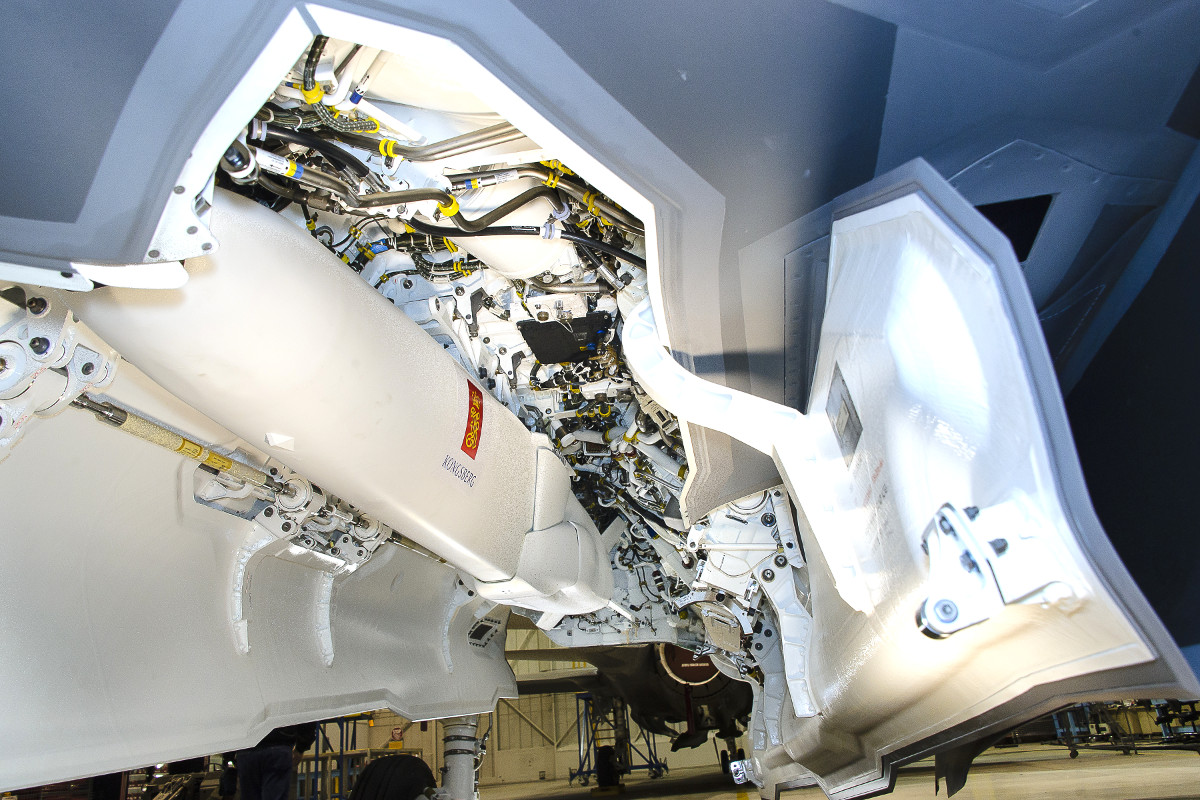
On top of that, Kongsberg already offers the anti-ship focused NSM in a ground-launched configuration for coastal defense, as well, and it’s likely that it could modify the containerized launchers with relative ease to use the JSM. At the upcoming Rim of the Pacific exercises, the U.S. Army already plans to evaluate a truck-mounted NSM system for its own emerging anti-ship requirements.
The Raytheon-Kongsberg team may be able to develop a version of the JSM that fits inside a standard pod for the tracked M270 Multiple Launch Rocket System (MLRS) and the wheeled M142 High Mobility Artillery Rocket System (HIMARS). The Army, which has both the M270 and the M142, and the Marines, who employ the HIMARS only, are both interested in acquiring an anti-ship missile that is compatible with these systems.
Raytheon is already familiar with these launchers as it is in the process of developing an improved quasi-ballistic missile called DeepStrike, which will work in either launcher as a replacement the Army Tactical Missile System (ATACMS) missile. Adding NSM or JSM to these systems would only increase their flexibility and that of various other platforms, since artillery crews could fire them from on board ships and then move them ashore as the battle progresses to strike targets further inland or to defend the beachhead against counterattacks from land or naval forces. They could also quickly switch back to firing guided rockets or other types of missiles, too.
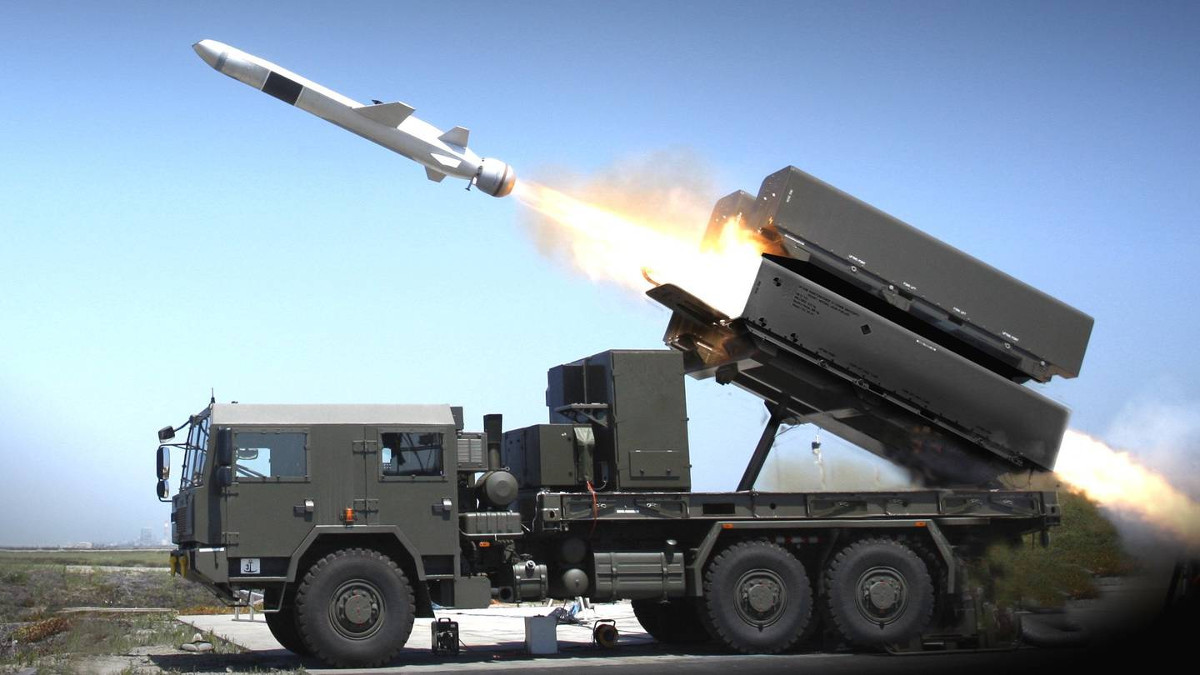
Networked together, various air, sea, and land platforms with NSMs and JSMs could also rapidly deploy the systems to different areas to create new vectors of attack. This could help disrupt an enemy’s planning process or even force them to abort a planned maneuver. Being able to quickly bring stand-off weapons to bear on a target area from multiple directions could be especially valuable in operations spread across a wide area where small outposts on land might be separated by large bodies of water, such as in the Pacific.
In the South China Sea, China is already looking to do much the same thing to try and limit the ability of foreign military forces, especially those of the United States, to operate in the area during a crisis by deploying long-range anti-ship cruise missiles, as well as surface-to-air missiles, on various man-made islands. Vietnam has sought to challenge those moves itself by positioning its own long-range guided rocket artillery onto islands it controls.
“The end result of my challenge shouldn’t be a simple exercise where we all high five at the end and then head back to the comforts of our services,” U.S. Navy Admiral Harry Harris, then head of U.S. Pacific Command, said during a speech in 2017. “Service-specific systems must be able to talk to one another if any of this is going to achieve the effects that we’re looking for. Ideally, we’ll get to a point where we see the Joint Force as a network of sensors and shooters allowing the best capability from any single service to provide cross-domain fires.”
With the Navy’s purchase of the NSM, this goal looks one step closer to being a reality.
Contact the author: jtrevithickpr@gmail.com
